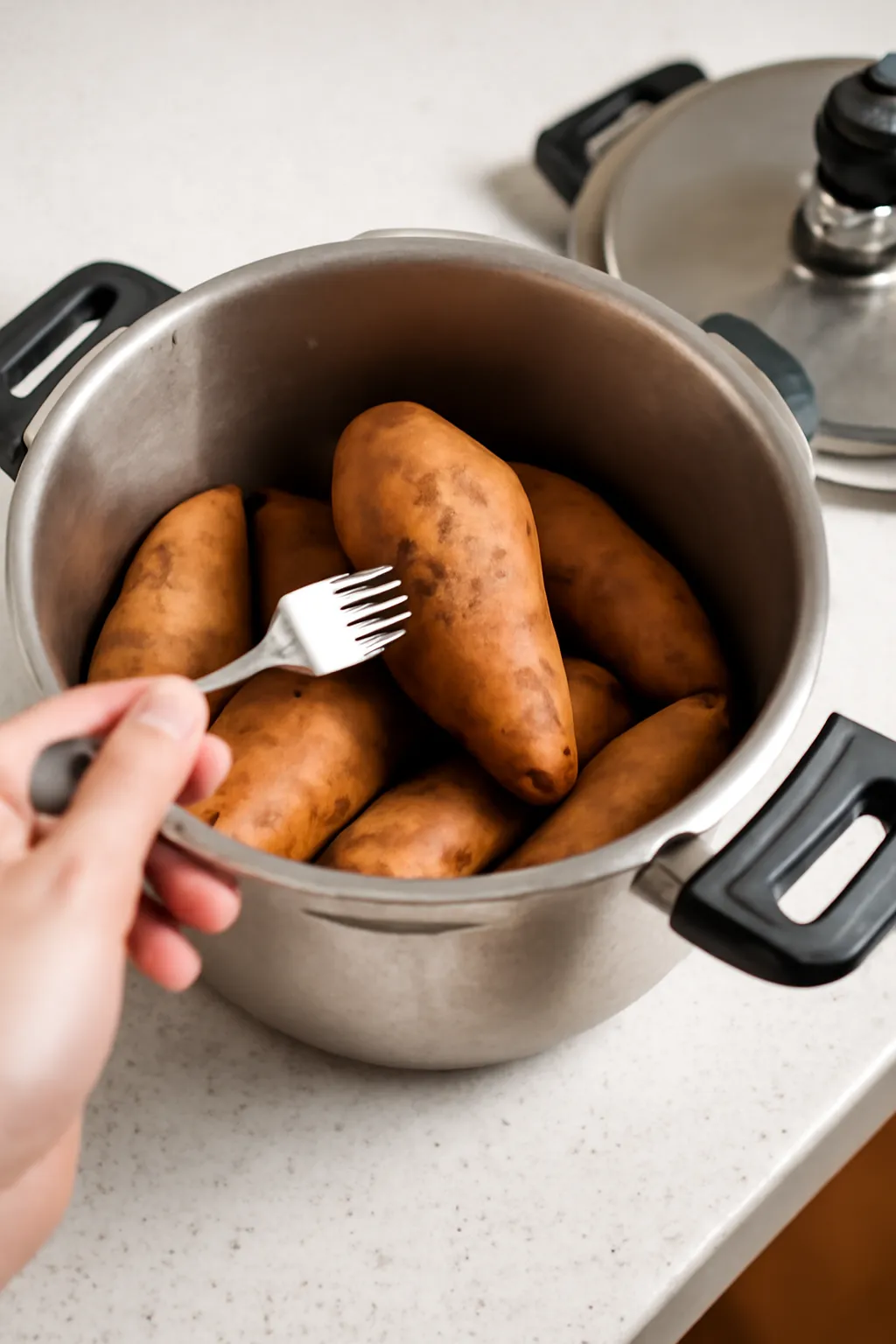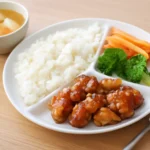Sweet potatoes are a beloved root vegetable, known for their versatility and nutritional benefits. Whether you’re preparing them as a side dish, for a healthy snack, or as an ingredient in your favorite recipes, sweet potatoes cook quickly and easily in a pressure cooker. If you want to know how to boil sweet potatoes using this kitchen appliance, this article will guide you through the process, offering tips and tricks to ensure perfect results every time.
Are you looking to boil sweet potatoes in a pressure cooker? Discover the best tips, step-by-step instructions, and expert advice for cooking sweet potatoes to perfection in a pressure cooker.
How to Boil Sweet Potatoes in a Pressure Cooker
Boiling sweet potatoes in a pressure cooker is a simple and fast way to prepare them for your meals. The pressure cooker not only reduces cooking time but also retains the nutrients and flavors better than traditional boiling. If you’re new to pressure cooking, the following steps will guide you to achieve tender, perfectly boiled sweet potatoes with ease.
Step-by-Step Instructions for Boiling Sweet Potatoes in a Pressure Cooker
-
Prepare the Sweet Potatoes Start by selecting firm, smooth sweet potatoes with minimal blemishes. Rinse them under cold water to remove dirt and debris. You can either peel the sweet potatoes before cooking or leave the skin on—this decision depends on your recipe or personal preference.
-
Cutting or Leaving Whole If you’re looking to reduce cooking time, you can cut the sweet potatoes into chunks or slices. However, for whole sweet potatoes, you can simply leave them intact. The size of the potatoes will affect the cooking time—larger potatoes will take longer to cook than smaller ones.
-
Add Water Pour 1 to 1.5 cups of water into the bottom of the pressure cooker. The water is necessary to generate steam and build up pressure, which is crucial for cooking the sweet potatoes evenly.
-
Arrange Sweet Potatoes in the Pressure Cooker Place the sweet potatoes in the pressure cooker. If you’re cooking multiple potatoes, try to layer them evenly, but avoid overcrowding the pot, as it may lead to uneven cooking.
-
Lock the Lid and Set the Pressure Cooker Close the lid of the pressure cooker securely. Set it to high pressure and cook for about 12 to 15 minutes for smaller sweet potatoes or 20 to 25 minutes for larger ones. If you’re using a stovetop pressure cooker, make sure to regulate the heat so that it maintains consistent pressure.
-
Release the Pressure Once the cooking time is up, turn off the heat and allow the pressure to naturally release for about 10 minutes. After that, carefully open the pressure release valve to release any remaining pressure. Be cautious of the steam.
-
Check for Doneness Open the pressure cooker, and use a fork to check if the sweet potatoes are tender. If they are easily pierced, they are done. If not, close the lid and cook for an additional 3-5 minutes.
-
Serve or Use in Recipes Once cooked, remove the sweet potatoes from the pressure cooker. You can serve them as is, mash them, or incorporate them into other recipes like casseroles, salads, or soups.
Why Pressure Cookers Are Perfect for Boiling Sweet Potatoes
Pressure cookers are fantastic for boiling sweet potatoes for several reasons. The high-pressure environment ensures that the heat is evenly distributed throughout the potatoes, cooking them faster and more efficiently. Additionally, pressure cooking helps retain the natural sweetness and moisture of the sweet potatoes, making them incredibly tender and flavorful.
Try this method to discover the joy of pressure cooking sweet potatoes—faster, easier, and more nutritious than boiling them traditionally!
👉 Get more tips for cooking with a pressure cooker! 👈
Sweet Potato: A Nutritional Powerhouse
Sweet potatoes are not only delicious but also offer a wealth of health benefits. Packed with essential nutrients like fiber, vitamin A, and potassium, they make an excellent addition to any diet. In this section, we’ll dive deeper into the nutritional value of sweet potatoes and why they’re so good for you.
Health Benefits of Sweet Potatoes
-
Rich in Fiber Sweet potatoes are an excellent source of dietary fiber, which aids digestion and promotes gut health. One medium-sized sweet potato can provide about 4 grams of fiber, helping to keep you feeling full longer and supporting healthy bowel movements.
-
Loaded with Vitamin A Sweet potatoes are one of the best sources of beta-carotene, which is converted into vitamin A in the body. Vitamin A is essential for maintaining healthy vision, skin, and immune function.
-
High in Potassium Sweet potatoes contain significant amounts of potassium, a mineral that helps regulate blood pressure and supports muscle function. Including potassium-rich foods in your diet can help balance sodium levels and reduce the risk of hypertension.
-
Antioxidant Properties The antioxidants found in sweet potatoes, such as anthocyanins and flavonoids, help fight free radicals in the body, reducing the risk of chronic diseases like heart disease and cancer.
-
Supports Blood Sugar Regulation The fiber and complex carbohydrates in sweet potatoes make them a great option for stabilizing blood sugar levels. Unlike simple carbohydrates, the sugar in sweet potatoes is released slowly into the bloodstream, preventing spikes in blood sugar.
Sweet Potato Versatility
One of the best things about sweet potatoes is their versatility in the kitchen. They can be used in both savory and sweet dishes, making them a perfect ingredient for a variety of meals. From mashed sweet potatoes to baked sweet potato fries, there are countless ways to incorporate them into your diet.
Want to learn more about the health benefits and uses of sweet potatoes?
👉 Explore more healthy recipes with sweet potatoes! 👈
Boiling Sweet Potatoes as a Pressure Cooker Method
Pressure cooking sweet potatoes isn’t the only method of boiling them, but it certainly offers the quickest and most convenient option. However, if you’re interested in learning more about different techniques for boiling sweet potatoes, this section explores additional methods and their advantages.
Traditional Boiling vs. Pressure Cooker Boiling
-
Time Efficiency Traditional boiling on the stovetop takes much longer, usually around 30 minutes to 1 hour depending on the size of the sweet potatoes. In contrast, pressure cooking reduces the cooking time significantly, making it ideal for busy schedules.
-
Flavor Retention When boiling sweet potatoes in a regular pot, some nutrients and flavors can be lost in the water. Pressure cooking, on the other hand, helps seal in the nutrients and maintains the natural sweetness of the sweet potatoes.
-
Texture Pressure-cooked sweet potatoes tend to have a creamier and fluffier texture than those boiled traditionally. The high-pressure environment allows them to cook evenly and become tender faster.
-
Cooking Multiple Sweet Potatoes The pressure cooker can easily handle multiple sweet potatoes at once, whereas traditional boiling requires a large pot and more water, which may not always be practical for larger meals.
-
Minimal Supervision Unlike traditional boiling, which requires constant monitoring, pressure cooking allows you to set the timer and move on to other tasks while the sweet potatoes cook to perfection.
Conclusion: Mastering the Art of Pressure Cooking Sweet Potatoes
In conclusion, boiling sweet potatoes in a pressure cooker is a quick, efficient, and nutritious way to prepare this delicious vegetable. The key to perfect results is understanding how to properly set up your pressure cooker, adjusting cooking times based on the size of the potatoes, and utilizing the natural sweetness and benefits of sweet potatoes to their full potential. Whether you’re making a simple side dish or using sweet potatoes in more elaborate recipes, the pressure cooker can be your best kitchen companion.
“Food is not just fuel; it’s information. It talks to your DNA and tells it what to do.” – Dr. Mark Hyman
If you want to learn more about cooking with pressure cookers or need further recipe ideas, feel free to explore the various resources available online.






